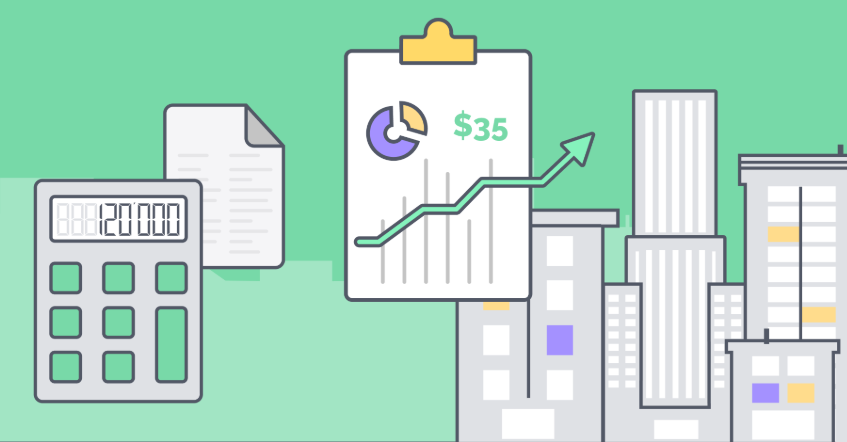Understanding financial terminology is essential in managing or analyzing finances. One such term, what does above the line refer to NOI debt, plays a vital role in financial reporting and assessment. This concept is primarily used in the real estate and investment sectors to evaluate income and debt metrics. Let’s dive deeper to understand its meaning and significance in financial analysis.
Defining “Above the Line” in Financial Terms
The phrase “above the line” in financial terminology generally refers to items that appear on a company’s income statement above the net income line. These items usually include revenue, operating expenses, and other elements that directly affect a business’s operating performance.
In the context of real estate and investments, “above the line” pertains to the net operating income (NOI) and its relationship to debt. It highlights revenue and expenses critical to determining operational success before considering financial obligations like interest payments or taxes.
What is NOI Debt?
Net Operating Income (NOI) represents the total income generated by a property after deducting operating expenses but before accounting for taxes and financing costs. NOI debt, in this context, refers to the debt obligations tied to the net operating income of a property.
For instance, if you own a commercial building, NOI measures the profit it generates through rents and leases after covering operational costs. The term becomes relevant when assessing the property’s ability to cover its financial obligations.
The Relationship Between Above the Line and NOI Debt
The phrase “above the line” highlights the financial metrics that are directly associated with a property’s performance. In real estate, NOI is considered an “above the line” figure because it evaluates operational efficiency without factoring in debt or other financial considerations.
Here’s how this impacts decision-making:
- Revenue vs. Expenses: NOI focuses on revenue streams and operational expenses.
- Debt Exclusion: It does not consider debt repayment or financial leverage.
- Investment Analysis: Investors use NOI to assess property performance objectively.
For lenders, NOI acts as a key metric to determine whether a property generates sufficient income to cover its debt obligations.
Key Components of NOI Debt Analysis
- Revenue Streams
- Rental income from tenants.
- Additional income, such as parking fees or shared amenities.
- Operating Expenses
- Maintenance and repairs.
- Property management fees.
- Utilities and insurance.
- Debt Metrics
- Loan repayments.
- Interest expenses tied to the property.
By analyzing NOI in conjunction with debt, financial analysts can determine the debt service coverage ratio (DSCR), a critical measure of a property’s ability to meet its financial obligations.
Why Above the Line Matters?
The concept of “above the line” provides clarity and focus on operational performance. It separates the core activities of a business or property from the impacts of financial structure or tax strategies.
For example:
- A property with high NOI indicates operational efficiency and profitability.
- Low NOI suggests potential issues in management or operational costs.
This clarity helps investors, property managers, and lenders make informed decisions regarding investments or financing.
Benefits of Analyzing NOI Debt
Clear Performance Metrics
By focusing on NOI, stakeholders can objectively assess how well a property is performing without being influenced by external financial factors.
Better Debt Management
Understanding the relationship between NOI and debt ensures that properties are not over-leveraged, reducing financial risk.
Enhanced Investment Decisions
Investors rely on NOI as a key indicator when deciding whether to purchase or sell properties.
Improved Operational Efficiency
Identifying factors that impact NOI allows property managers to streamline operations and improve profitability.
Common Challenges in NOI Debt Analysis
While analyzing NOI debt provides many benefits, there are also challenges to consider:
- Fluctuating Expenses: Unexpected operational costs can distort NOI figures.
- Revenue Volatility: Tenant turnover or vacancies may reduce income.
- Debt Mismanagement: High leverage can strain financial performance, even with strong NOI.
- External Factors: Economic downturns or market shifts can impact both revenue and debt repayment ability.
Practical Tips for Managing NOI Debt
To ensure that NOI and debt are effectively managed, consider the following practices:
- Regular Reviews: Periodically assess income and expenses to identify trends.
- Control Costs: Minimize operational expenses without compromising service quality.
- Maintain Occupancy: Ensure high tenant retention to stabilize revenue streams.
- Leverage Responsibly: Avoid overextending debt beyond what the property can sustain.
Conclusion
In financial reporting and real estate investment, understanding what does above the line refer to NOI debt is crucial for making sound decisions. By focusing on the operational efficiency of a property, this concept helps separate core performance from external financial considerations.
For investors and property managers, analyzing NOI in relation to debt offers valuable insights into a property’s profitability and sustainability. With a clear understanding of this metric, stakeholders can make informed choices that enhance long-term financial success.
FAQs
What does above the line mean in financial terms?
Above the line refers to income and expenses directly associated with a property’s operational performance, excluding financing and tax-related items.
How is NOI debt calculated?
NOI debt is not directly calculated but involves analyzing a property’s NOI in relation to its debt obligations, such as loan repayments and interest.
Why is NOI important for investors?
NOI provides a clear picture of a property’s operational profitability, helping investors assess its potential return on investment.
Can high NOI guarantee financial stability?
High NOI indicates operational success, but financial stability also depends on factors like debt management and market conditions.
How does NOI impact property valuation?
NOI is a critical factor in determining a property’s market value, as it directly relates to its income-generating potential.







